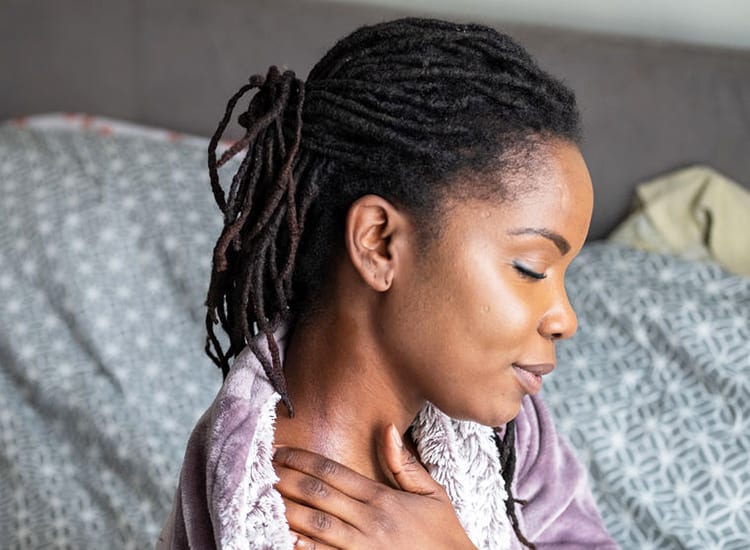Clean 21: 21 Day Detox
Our Signature 21-Day Full-Body Reset
Questions? Ask about this product
Free Shipping On Orders Over $50
Complementary products


It’s the day after a vigorous spin class and your glutes are so sore you can’t sit, stand, or lie down comfortably. While you could pop a few ibuprofen, finding relief from post-workout muscle soreness could be a bit simpler. We’re talking about CBD, which you’ve probably heard of in the context of edibles, tinctures, skincare, and even lattes. While CBD is derived from the cannabis plant, it won’t get you high. However, when applied topically, it may soothe aches and pains and help you recover faster after a workout.
How does topical CBD work?
To understand how CBD could impact your post-workout recovery, it’s important to know what is. CBD is short for cannabidiol, which is one of two major cannabinoids found in the cannabis plant. The other is tetrahydrocannabinol or THC. The difference between CBD and THC comes down to the arrangement of a single atom. It might not seem like a big deal, but this slight variation has a huge impact on how each compound affects the body.
THC has the unique ability to bind to both CB1 and CB2 receptors. CB1 receptors are found in areas of the brain responsible for memory, cognition, emotion, and motor coordination, while CB2 receptors are sprinkled throughout the central nervous and immune systems. CBD can only bind to CB2 receptors, which means it delivers many of the same benefits as THC without the psychoactive effects. When applied topically, CBD is absorbed through the skin where it can interact with nearby cannabinoid receptors and reduce inflammation in injured tissues.
The link between Activity, inflammation, and CBD
When it comes to building muscle and getting toned, a little bit of inflammation is good. In fact, it’s crucial for getting the results you want. Working out causes micro-damage to our muscles, triggering the body’s natural repair process and allowing tissues to grow back stronger. The problem occurs when too much inflammation is left unchecked. When we overdo it and push beyond what we’re conditioned to do, inflammation can lead to poor workout performance and Activity injuries like sprains, strains, and joint pain.
Fitness fanatics and serious athletes often rely on non-steroidal anti-inflammatory drugs (NSAIDs) like ibuprofen to soothe post-workout pain and aid the recovery process. However, popping over-the-counter painkillers too often could have some unexpected and troubling consequences for people who vigorously Activity. Multiple studies have shown that NSAIDs may overtax the kidneys during prolonged workouts and reduce the muscles’ ability to recover afterward.
CBD provides a natural alternative to pain relief. And, when applied topically, CBD never reaches the bloodstream. It offers localized relief from muscle and joint pain without the potentially harmful side effects of taking NSAIDs. This being said, there isn’t much research on the long-term effects of CBD products, and doctors aren’t sure whether continued use of CBD is effective or even safe. If you do decide to try topical CBD to aid in your post-workout recovery, there are a couple of things you can do to enhance the effects.
How to use topical CBD for the best post-workout recovery:
1. Shower before applying topical CBD. Our skin has low permeability, which makes it difficult for bacteria and other harmful substances to get in. This also makes it tricky for the skin to absorb good stuff, like CBD ointments and salves. After your workout, thoroughly wash off any sweat, dirt, and other substances that could create a barrier between the CBD and your skin. This will help create an optimal environment for absorption. Dry-off thoroughly before applying CBD.
2. Don’t be shy with application. Because the skin absorbs cannabinoids at a low rate, a liberal application is key for feeling the effects of topical CBD. You may also need to apply more than once. With each application, massage and rub the topical into your skin. Keep in mind, it could take over an hour for the pain-relieving benefits of CBD to kick in. Follow the instructions on the label for reapplication, up to several times daily.
3. Check with your doctor. As when incorporating any new treatment into your wellness routine, it’s a good idea to check with your doctor first, especially if you’re taking other medications or supplements. CBD has powerful healing potential, but the total effects on the body haven’t been fully explored.
Written by Kate Kasbee
If you enjoyed this article, you might also like What are the benefits of foam rolling?